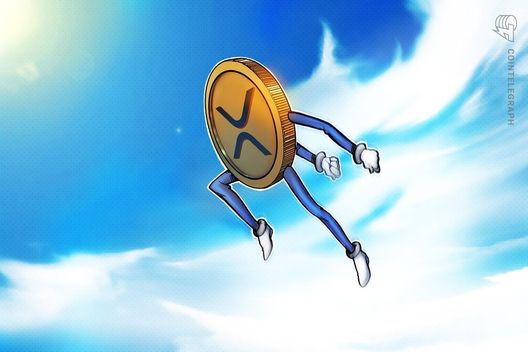- XRP briefly surpassed McDonald’s in market cap following its recent price surge.
- XRP price has dropped 5% after hitting a new high of $3.65.
- Ripple has moved 200M XRP from a 2020 wallet in a third massive transfer.
Notably, after an impressive 500% surge since July 2024, XRP briefly outshone corporate giants like McDonald’s and American Express in market capitalisation.
📊 $XRP HAS SURPASSED A $215 BILLION MARKET CAP
Ripple officially exceeded the market value of American Express and McDonald’s, solidifying its position among the world’s top assets.
The token has surged 500% since July 2024, reaching a new ATH of $3.65. pic.twitter.com/kBQ0uEsJGo
— Cryptic (@Cryptic_Web3) July 21, 2025
However, recent movements by Ripple have introduced uncertainty, causing the XRP price to drop nearly 5% from its record high of $3.65 and settle around $3.45 at press time.
Ripple moves massive XRP from old wallet
In a move that has caught the attention of both investors and blockchain analysts, Ripple recently transferred 200 million XRP (worth approximately $700 million at the time) from an old wallet created in 2020 to a newly activated address.
Blockchain tracking platform Whale Alert was the first to flag the massive transaction, sparking a wave of speculation across the crypto community.
🚨 🚨 🚨 🚨 🚨 🚨 🚨 🚨 🚨 🚨 200,000,005 #XRP (700,609,232 USD) transferred from unknown wallet to unknown new wallethttps://t.co/w1U8Ei5XoZ
— Whale Alert (@whale_alert) July 23, 2025
This was not an isolated case. According to XRP Liquidity (Larsen/Britto/Escrow/ODL/RLUSD), this is the second large transaction of similar size in just three days.
Notably, each of these transfers involved 200 million XRP, all executed from Ripple-controlled wallets and routed to fresh, unidentified addresses.
The emptied wallet had been dormant for years, further intensifying curiosity about Ripple’s motive behind the sudden movements.
XRP price dips after new all-time high
The timing of these transactions coincided with XRP’s retracement from its newly reached high of $3.65.
The token had recently touched this mark twice in the past week, once on Friday and again on Monday.
However, following the latest wallet movement, XRP’s price slipped to a low of $3.44, creating questions about the stability of its ongoing rally.

The price dip could be a short-term response to perceived selling pressure, even though there is no direct evidence that Ripple has sold the tokens.
Many believe the XRP transfers by Ripple could be strategic, possibly for liquidity management, staking preparation, or institutional onboarding.
However, for traders, large transfers often signal potential market volatility.
What’s next for XRP?
Despite the short-term price correction, XRP’s long-term outlook remains optimistic.
The fundamentals supporting its growth — regulatory clarity, institutional adoption, and market legitimacy — are still intact.
Ripple’s massive wallet transfers may create momentary doubt, but they also suggest internal restructuring and strategic allocation rather than market exit.
For traders and investors, the key question now is whether XRP can stabilise above the $3.40 range and push toward reclaiming its $3.65 high.
The current market conditions, shaped by both internal blockchain activity and broader macro developments, will play a pivotal role in determining the next leg of XRP’s journey.
As the crypto market continues to evolve, XRP remains one of the most closely watched digital assets.
Its ability to hold momentum amid large-scale movements and shifting sentiment will likely define its performance in the months ahead.
The post XRP price staggers as Ripple moves 200 million tokens appeared first on CoinJournal.


